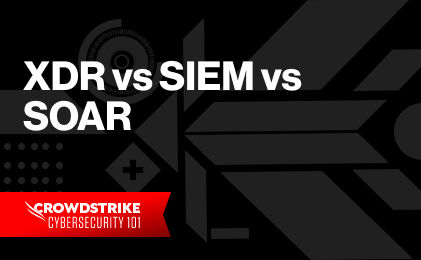What is XDR?
Extended detection and response (XDR) is a security tool that collects threat data from your security tools for easier and faster investigation.
An XDR platform draws security telemetry from multiple sources and condenses the information to enable security teams to rapidly eliminate threats.
Once you’ve decided to use an XDR solution, you need to decide between open vs. native XDR.
The Differences Between Open XDR and Native XDR
Generally, XDR platforms are broken into two types: Open XDR and Native XDR. Before choosing which type is best for your organization, it’s best to understand the differences between them.
The table below offers an easy-to-digest comparison of the two types of XDR for your organization to use as a quick reference.
| Open/Hybrid XDR | Native XDR | |
|---|---|---|
| What is it? | Open XDR relies on third-party integrations to collect specific forms of telemetry and execute response actions related to those forms. | Native XDR integrates security tools from a single vendor to collect different forms of telemetry and conduct response tasks. |
| Benefits |
|
|
| Challenges |
|
|
| Best for |
|
|
While different terms are used to describe XDR categories from ‘open’ and ‘hybrid’ to ‘closed’ and ‘native’, Forrester describes XDR as ‘hybrid’ or ‘native’. Forrester analyst Allie Mellen has published a number of blogs and reports covering XDR. In one blog she defines hybrid XDR as: “An XDR platform that relies on integrations with third parties for the collection of other forms of telemetry and execution of response actions related to that telemetry.”
This Forrester blog describes native XDR as: “An XDR suite that integrates with other security tools from their portfolio for the collection of other forms of telemetry and execution of response actions related to that telemetry1.”
How to Choose Between Open XDR and Native XDR for Your Organization
You’ve decided to move forward with XDR for the security of your business, and now you are learning that each XDR category has its own benefits and limitations.
When deciding which XDR solution is the right fit for your business, first consider the current state of your security solutions. If you take a best-of-breed approach and have solutions from various providers across your security stack, open XDR has more appeal. If you have a homogenous security stack primarily sourced from a single vendor, native XDR may provide what you need with minimal hassle.
Another important consideration is the future of security solutions for your business. If you want the ability to implement cutting-edge solutions from any provider, open XDR will provide that flexibility.
The Best of Both Worlds: CrowdStrike CrowdStrike Falcon® Insight XDR and the CrowdXDR Alliance
CrowdStrike offers an XDR solution that allows your business to benefit from a robust, easy-to-use platform and an alliance of tightly integrated, best-of-breed products.
CrowdStrike Falcon® Insight XDR
CrowdStrike CrowdStrike Falcon® Insight XDR can help you supercharge detection and response across your security stack CrowdStrike Falcon® Insight XDR synthesizes multi-domain telemetry to provide security teams with a unified, threat-centric command console. CrowdStrike Falcon® Insight XDR gives security professionals the information and tools they need to respond to, contain and remediate sophisticated attacks — faster and more efficiently.
To see CrowdStrike Falcon® Insight XDR in action, click the button below to watch the demo:
The CrowdXDR Alliance
To leverage the benefits of open XDR, CrowdStrike founded the CrowdXDR Alliance. The CrowdXDR Alliance is a revolutionary coalition of organizations striving to enable unified, threat-centric detection and response across an organization’s security and technology ecosystem. The alliance includes industry-leading security and IT solutions such as Google Cloud, Proofpoint, Zscaler and CloudFlare.
Specifically, the CrowdXDR Alliance offers:
- A unified XDR approach with shared ontology, common query language and purpose-built workflow automations
- Unmatched visibility with the broadest range of first- and third-party sources across multiple technologies and domains
- The flexibility and power to have XDR your way. You choose the scope of XDR for your organization, the domains it covers and the tools you integrate.







